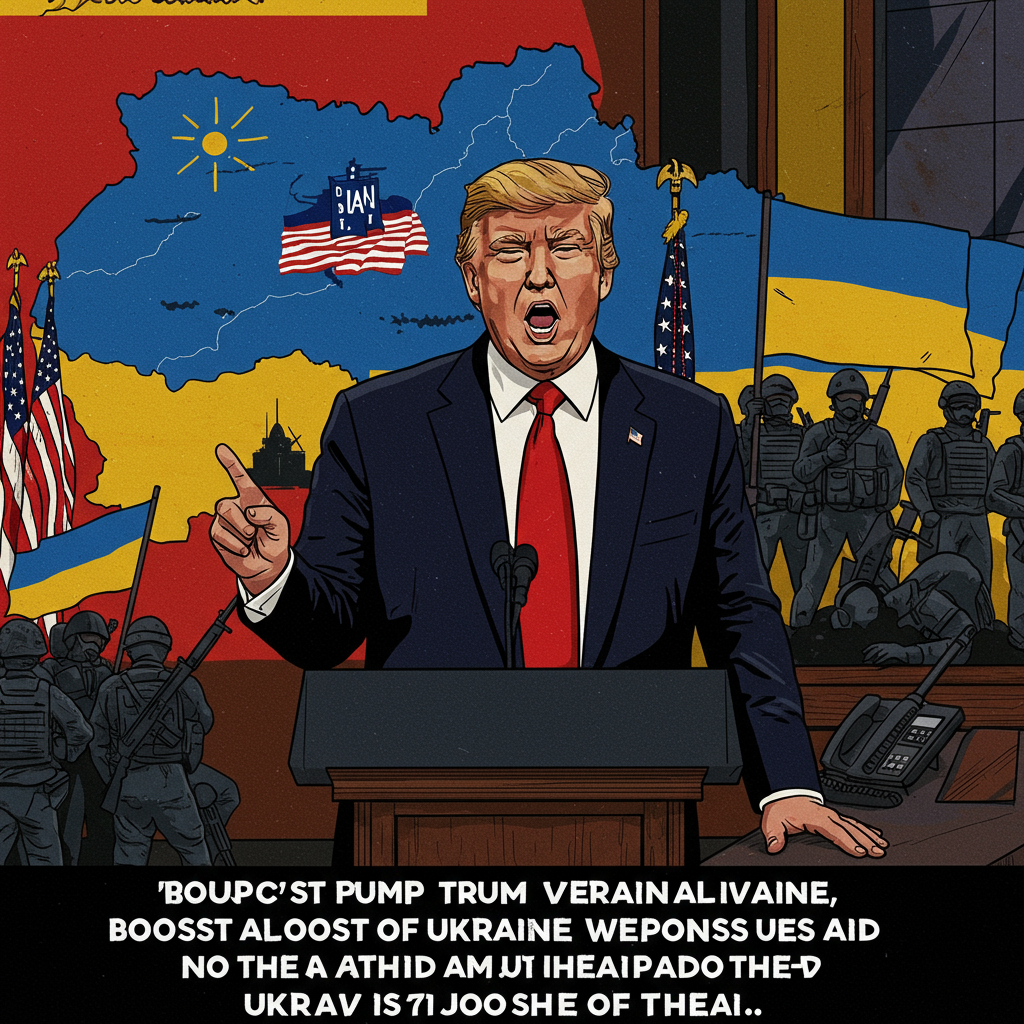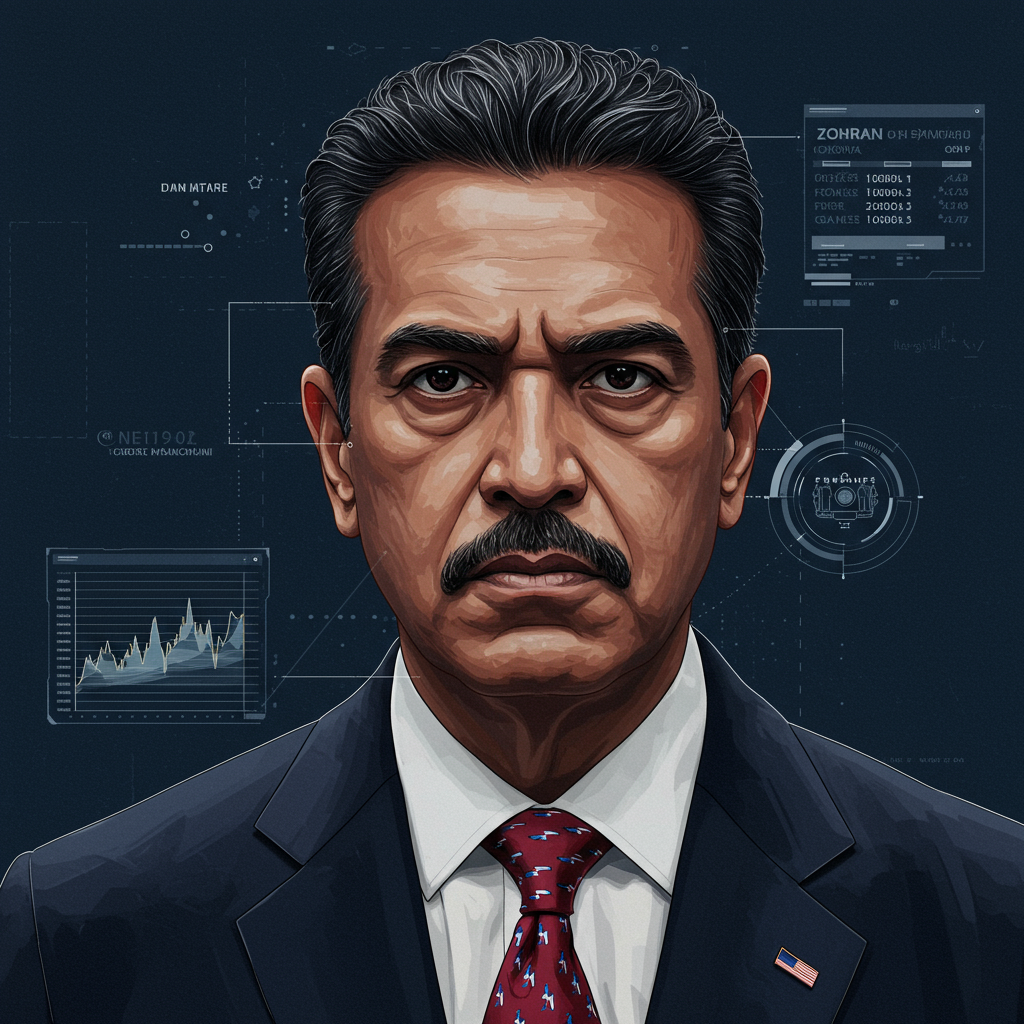The global political and economic landscape is currently navigating a period of significant upheaval. Major policy shifts from the United States are reshaping international trade, influencing geopolitical alliances, and sparking contentious domestic debates. From the implementation of sweeping new tariffs to critical diplomatic efforts concerning the Ukraine conflict, and an assertive stance on internal governance, these developments hold profound implications worldwide. This article unpacks the latest updates, offering an in-depth look at the forces at play and their potential impacts on economies, international relations, and daily lives.
The New Era of US Tariffs: Economic Impacts and Global Repercussions
Just after midnight ET, President Donald Trump’s comprehensive new tariffs officially took effect, marking a dramatic shift in American global trade policy. These measures introduce a baseline 10% duty on most imports. According to the nonpartisan Yale Budget Lab, this action elevates the overall average effective tariff rate to over 17%, reaching levels not seen since 1935 during the Great Depression.
A wide array of goods now faces these increased import taxes. This includes European Union appliances, Japanese cars, and a variety of products from China such as food, furniture, and toys. South Korean televisions are also affected. Notably, certain oil and gas imports, specific smartphones, and goods covered by existing trade agreements with Canada and Mexico are exempt from these new duties.
Rationale and Economic Realities
Treasury Secretary Scott Bessent articulated the administration’s rationale, claiming that overseas manufacturers are absorbing some of these tariff costs rather than passing them on to consumers. Bessent asserted that these tariffs are designed to foster “real income growth for working-class Americans” and ignite a “manufacturing renaissance” within the U.S. He predicted this economic surge would materialize “over the next couple of years,” a sentiment echoed by President Trump, who anticipates an “explosion” in American manufacturing.
However, the economic picture is complex. Despite the tariffs snapping into effect, major stock indexes initially moved higher, driven partly by investor confidence in artificial intelligence and broad exemptions for semiconductor tariffs, which benefit large tech companies. Yet, signals of a slowing job market are emerging. Furthermore, price pressures are increasing. Inflation has risen from 2.3% in April to 2.6% in June since the April 2 global tariff announcement. This suggests that the tariffs’ intended benefits may be offset by broader economic challenges for consumers.
International Reactions to Tariff Policies
The imposition of these US tariffs has triggered immediate and strong reactions globally. Swiss President Karin Keller-Sutter’s recent visit to Washington, D.C., failed to secure a reduction in the steep 39% tariff imposed on Swiss goods. She returned without a deal, despite Switzerland advocating for a “rule-based relationship” and seeking a more favorable 10% rate.
In Asia, Indian Prime Minister Narendra Modi declared his country’s readiness to “pay a big price” to protect its farmers. This statement came in response to President Trump doubling tariffs on India to 50%, calling them “unfair, unjustified, and unreasonable.” India views these increased duties as a punitive measure linked to its continued purchase of discounted Russian crude oil. Indian industry bodies, like the Federation of Indian Export Organisations (FIEO), expressed “extreme shock” at the 50% tariff, which impacts a significant portion of India’s exports to the U.S. The Global Trade Research Initiative (GTRI) forecasts potential export reductions of 40-50% for affected Indian products.
European nations are also bracing for impact. Ireland is developing a “Market Diversification Action Plan” to lessen its economic vulnerability to potential further U.S. tariffs. Germany’s automotive industry is pressing for a swift reduction in tariffs on cars and automotive parts from 27.5% to the previously agreed 15% ceiling, citing the current rates as a “significant burden.” These developments underscore the widespread global economic disruption caused by the new Trump policies.
High-Stakes Diplomacy: Ukraine, Putin, and Global Security
Geopolitical discussions are intensifying, particularly around the ongoing conflict in Ukraine. The Kremlin has confirmed that a meeting between President Trump and Russian President Vladimir Putin has been agreed upon in principle. This high-profile encounter is slated to occur in the “coming days,” with suggestions of a meeting next week in the United Arab Emirates. President Trump has expressed his hope that this will be an opportunity to discuss ending the war in Ukraine directly with his Russian counterpart.
However, the path to peace remains complex. While Putin indicated he had “nothing against” meeting Ukrainian President Volodymyr Zelenskyy, he emphasized that “certain conditions” must be met. He believes these conditions are currently “far” from satisfactory. Crucially, the Russian leader has also rejected Trump’s proposal for a three-way summit involving Zelenskyy. This potential for Trump-Putin talks without direct Ukrainian or allied European participation is a source of concern for Kyiv and many European capitals.
Ukraine’s Diplomatic Push and Regional Dynamics
Ukrainian President Zelenskyy is actively engaging with European leaders to coordinate diplomatic positions. He has held calls with German Chancellor Friedrich Merz, French President Emmanuel Macron, and European Commission President Ursula von der Leyen. During these discussions, Zelenskyy stressed the necessity of a “common European view on key security issues.” He firmly insisted that Europe, given Ukraine’s EU accession process, “must be a participant in the relevant processes” for ending the war. Zelenskyy has called for a “real ceasefire,” noting Russia’s lack of a clear public response. He warned that “prolonging the war will come at a cost” and revealed he held a meeting on “deep strikes” into Russian territory, assessing their impact on Russia’s war machine.
Beyond Ukraine, other significant international engagements are unfolding. Israeli Prime Minister Benjamin Netanyahu stated that Israel plans to take over Gaza but does not intend to govern the enclave long-term. Meanwhile, Vice President JD Vance is scheduled to travel to the United Kingdom. He will meet with U.K. Foreign Secretary David Lammy to discuss various topics pertaining to the U.S.-U.K. relationship. These discussions highlight the intricate web of global challenges and diplomatic efforts currently underway.
Key Domestic Policy Shifts: Law, Politics, and Census Reform
Beyond international affairs, the Trump administration is also pushing significant changes on the domestic front. These moves have generated considerable debate and legal challenges, impacting fundamental aspects of governance and civil liberties.
Enhanced Federal Law Enforcement in Washington, D.C.
The administration is directing a stronger federal law enforcement presence in Washington, D.C. This could involve officers from the Department of Homeland Security, Immigration and Customs Enforcement (ICE), the FBI, and the National Guard. President Trump has heavily criticized the crime rate in D.C., despite local police data showing a 26% decrease in violent crime compared to the previous year. He cited a specific assault on a former Department of Government Efficiency employee as justification. The President has also indicated that White House lawyers are examining whether Congress should overturn the Home Rule Act. This act grants D.C. residents the power to elect their own mayor and city council. Trump threatened to “FEDERALIZE this City” and “take Federal control” if D.C. does not “get its act together,” also calling for minors (14+) involved in crimes to be prosecuted as adults and imprisoned long-term.
Contentious Redistricting Battles
Political maneuvering over electoral maps is reaching new heights. Senator John Cornyn, R-Texas, announced that FBI Director Kash Patel approved his request for federal agents to help locate Texas Democratic legislators. These lawmakers had fled the state in an effort to block a Republican redistricting plan. This move aims to enable GOP efforts to entrench their power. This situation follows a significant 2019 Supreme Court ruling. That decision clarified that federal courts lack the authority to intervene in partisan gerrymandering, effectively allowing the practice to continue unchecked. With technological advancements, surgically drawing districts to maximize partisan advantages has become increasingly easy for both parties, amplifying the stakes in electoral reform.
Census and Human Rights Report Adjustments
President Trump has instructed the Commerce Department to prepare a new census report that would exclude undocumented immigrants from the count. This reiterates a contentious effort from his first term, which was later reversed by the Biden administration. The proposal cites the use of “results and information gained from the Presidential Election of 2024” as a basis.
Furthermore, the Trump administration is scaling back the State Department’s annual human rights report. This report has been compiled for nearly 50 years under congressional mandate. The revised focus will place a new emphasis on restrictions on freedom of expression by both U.S. allies and adversaries. The report for the previous year has already experienced significant delays, reflecting a shift in diplomatic priorities. These domestic policy shifts underscore a broader agenda of asserting federal control and reshaping the frameworks of governance.
Frequently Asked Questions
How do President Trump’s new tariffs impact the U.S. economy and global trade?
President Trump’s new tariffs, effective just after midnight ET, impose a baseline 10% duty on most U.S. imports. This raises the overall average effective tariff rate to over 17%, the highest since 1935, according to the Yale Budget Lab. While the administration claims these tariffs will foster a “manufacturing renaissance” and “real income growth,” early economic indicators show a complex picture. Major stock indexes initially rose, but signs of a slowing job market and increasing inflation (from 2.3% in April to 2.6% in June since the tariff announcement) are emerging. Globally, countries like Switzerland and India have expressed alarm, facing steep new duties that threaten their exports and economies.
What are the latest developments regarding a potential meeting between Trump and Putin on the Ukraine war?
The Kremlin has confirmed an agreed-upon meeting between President Trump and Russian President Vladimir Putin, expected to occur in the “coming days,” possibly in the UAE. Trump hopes to discuss ending the war in Ukraine directly with Putin. However, Putin has stated he has “nothing against” meeting Ukrainian President Volodymyr Zelenskyy, but only if “certain conditions” are met, which he deems “far” from satisfactory. The Russian leader has rejected a three-way summit involving Zelenskyy, a stance that has alarmed Kyiv and many European capitals. Ukrainian President Zelenskyy is actively engaging EU leaders to coordinate a “common European view” on security issues and insists Europe must participate in peace processes.
What significant domestic policy changes are currently underway in the U.S.?
Domestically, the Trump administration is implementing several significant policy shifts. These include directing a stronger federal law enforcement presence in Washington, D.C., with potential involvement from agencies like the FBI and National Guard, citing concerns over crime despite conflicting data. Additionally, Senator John Cornyn has secured FBI assistance to locate Texas Democratic legislators who fled to block a Republican redistricting plan, leveraging a 2019 Supreme Court ruling that allows partisan gerrymandering. The administration also plans to exclude undocumented immigrants from a new census report and is scaling back the State Department’s annual human rights report, focusing instead on freedom of expression restrictions globally.
Looking Ahead: Navigating an Evolving Landscape
The current wave of U.S. policy shifts, from aggressive trade tariffs to strategic diplomatic engagements and contentious domestic maneuvers, highlights a period of profound transformation. These actions, designed to reassert American power and reshape international and internal dynamics, carry significant consequences. As economies adapt and global alliances are tested, the coming months will reveal the true impact of these far-reaching decisions on nations and individuals worldwide. Understanding these developments is crucial for anticipating the evolving global and domestic landscape.


